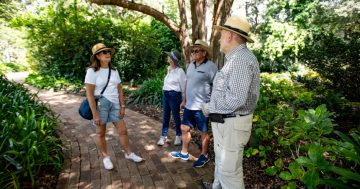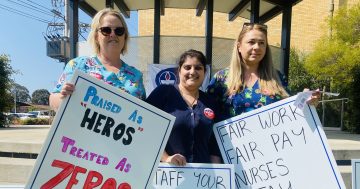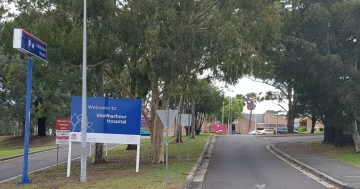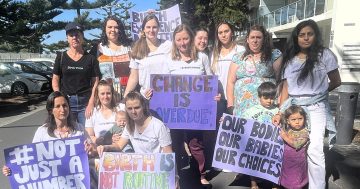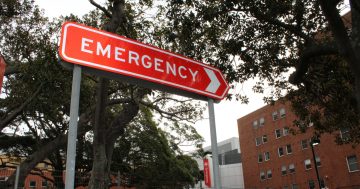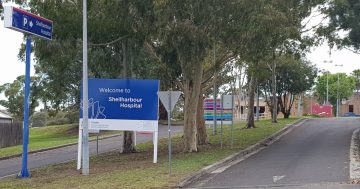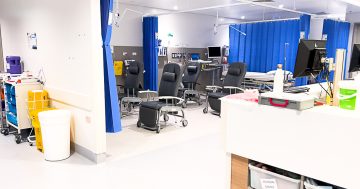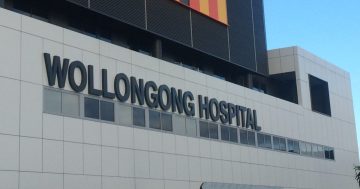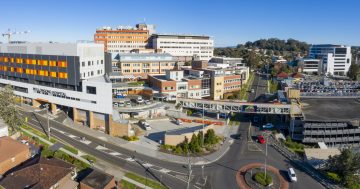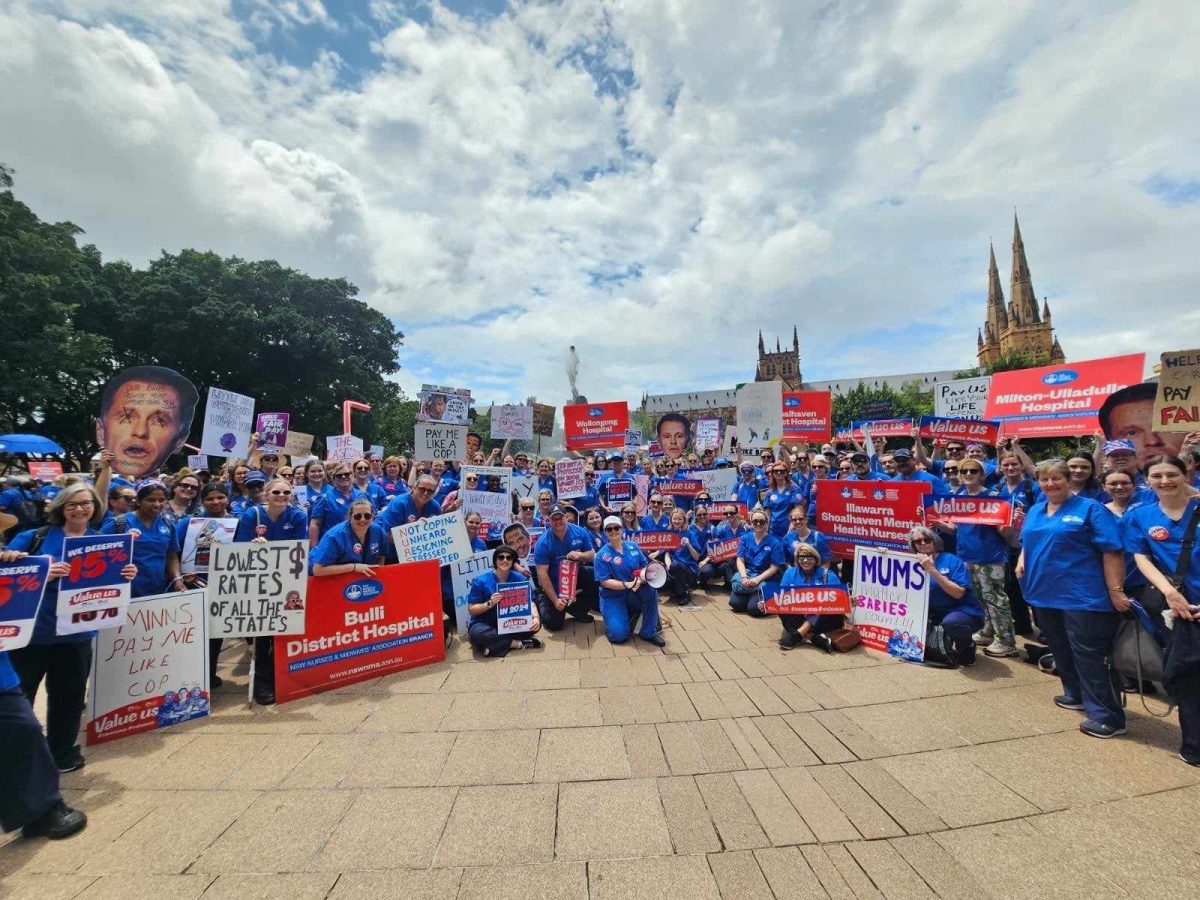
Nurses from the Illawarra and Shoalhaven travelled to Sydney to march on Parliament House as part of a strike action for better pay and conditions. Photo: Nurses and Midwives Association of NSW.
Nurses and midwives from the Illawarra-Shoalhaven Local Health District have marched on Parliament House in Sydney as part of a strike action for better pay and conditions.
Emma Gedge, who has worked as a midwife for the past 11 years, said nurses were infuriated by how the NSW Government had approached negotiations.
“We are among the lowest paid nurses in the country; we went into negotiations in good faith, we did the hard work to find them savings and they haven’t come to the table,” Emma said.
“The NSW Government has been crying poor, but they gave police a significant pay rise in the past couple of days.
“It’s added fuel to the fire. They’re gaslighting us at this point. They’re lying about the state of the health service and we are sick of it.”
Nurses and Midwives Association of NSW General Secretary, Shaye Candish, said the union was forced to strike after no progress on pay was made during a four-week intensive negotiation period.
NSW Minister for Health Ryan Park said the association had reneged on its agreement with the government to cease industrial action, and the strike would have an impact on patient care.
“Over the course of four weeks of intensive negotiations we have reached agreement on all of the association’s non-wage claims, as well as put forward a range of options to fund and deliver a new increased wage offer,” he said.
“The association had previously agreed to cease industrial action contingent on the government paying nurses and midwives an interim increase while work towards a final settlement remains on foot, in order to shield patient care from impacts arising from industrial action.
“I am disappointed the association has walked away from this commitment to the Industrial Relations Commission and the community.
“The government has made major investments in nursing and midwifery wages by removing the wages cap and delivering a 4.5 per cent wage increase last year and offering a baseline 10.5 per cent wage increase over the next three years.”
Nurses argue these increases don’t keep up with the rising cost of living, and don’t address the gap in pay between nurses in NSW and other states.
Emma said poor staffing levels affected patient care every day, and strike action was the only way to improve them.
“When I started it was very rare we were short-staffed – now it’s every single shift,” she said.
“It’s not uncommon on my ward for one midwife to care for six mums and six babies. It’s not safe, but it’s the norm.
“I don’t think patients realise when they’re waiting in ED it’s because we are literally running between patients.
“This is how things fall through the cracks; this puts patients at risk every day.
“Our system is being held up by overtime and people doing extra shifts.
“For the government to say they are implementing safe staffing levels is a straight-out lie.”
Minister Park said more than 100 additional nurses had started work in 16 emergency departments across the state as part of safe staffing levels policy and a record high of 7000 new nurses joined the workforce in the 2023-2024 financial year.








